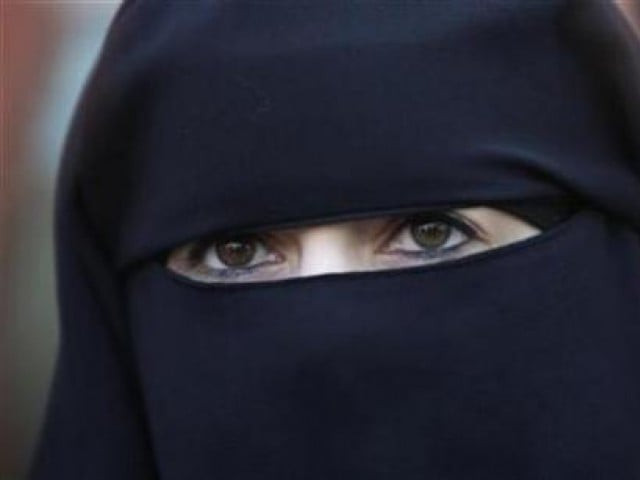Women's veils a sign of backwardness, says official in China's Xinjiang
The government has stepped up curbs on religious clothing in the heavily Muslim area

PHOTO: AFP
Energy-rich Xinjiang, visited this week by British finance minister George Osborne on a rare trip by a Western official, is strategically located on the borders of Central Asia. China has great plans for the region in its new Silk Road strategy.
The government has stepped up curbs on religious clothing in the heavily Muslim area, where it blames separatists for violence that has killed hundreds of people over the past few years.
Read: Woman sues police over headscarf removal
Many Xinjiang experts say the outlawing of veils and strict enforcement of the rules could further stigmatise the region's Uighurs, who speak a Turkic language and call the region home.
Last year, Karamay, a northwestern city in Xinjiang, banned people wearing head scarves, veils or long beards from boarding buses. Authorities in Xinjiang's capital of Urumqi have also banned the wearing of Islamic veils in public.
In unusually strong comments, Xaukat Emen, a member of the Xinjiang Communist Party standing committee, said face veils and other coverings for women were "typical extremist attire" and had nothing to do with Xinjiang, or Arab or Muslim countries.
"A people who totally cover both their eyes are certainly a backward people. We Uighurs do not want to see our female comrades wear this type of clothing," he told a news conference in Beijing.
"Many women want to work, and many want to have contact with society. So on this issue, we will resolutely not agree."
In some cases, men had worn the veil to kidnap children, he added.
Uighurs have traditionally followed a moderate form of Islam, but many have begun adopting practices more common in Saudi Arabia or Pakistan, such as full-face veils for women, as China has stepped up the security crackdown of recent years.
Read: White House to honour Muslim woman for environmental work
Exiles and many rights groups trace the real cause of the unrest to China's heavy-handed policies, including curbs on Islam and the culture and language of the Uighurs. China denies trying to repress the Uighurs.
An Uighur himself, Xaukat Emen said the government was committed to supporting religious rights in Xinjiang, especially those relating to important festivals such as Eid and the fasting month of Ramazan.
"All the people enjoy religious freedom, and the normal religious practices of believers are protected by law," he said.



















COMMENTS
Comments are moderated and generally will be posted if they are on-topic and not abusive.
For more information, please see our Comments FAQ